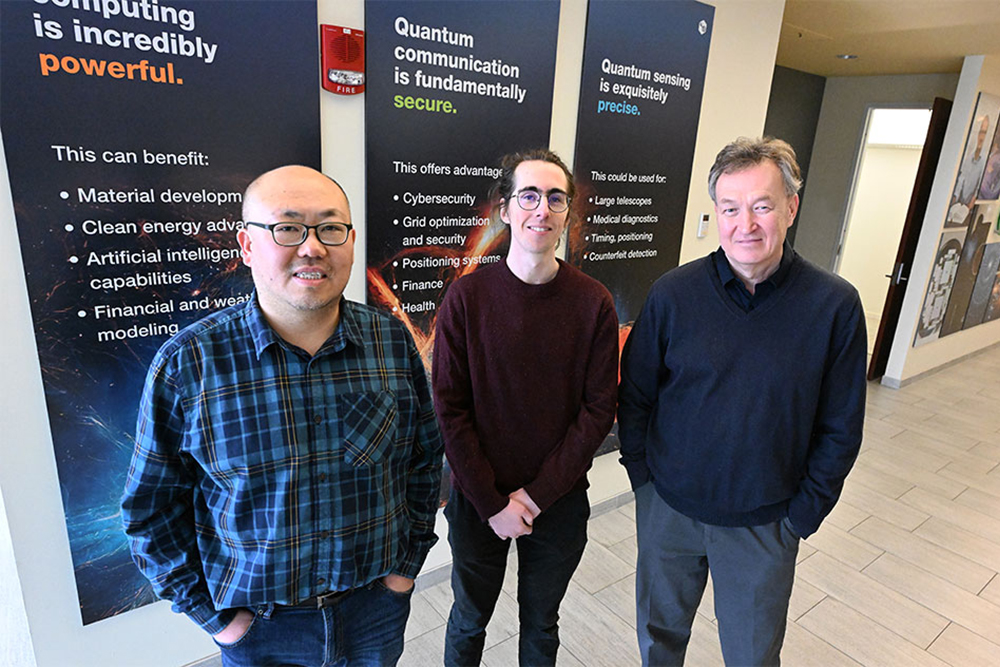
Prediction of quantum entanglement in particle jets lays groundwork for experimental tests at particle colliders — and provides insight into leveraging classical computers for quantum calculations
Today, the word “quantum” is everywhere — in company names, movie titles, even theaters. But at its core, the concept of a quantum — the tiniest, discrete amount of something — was first developed to explain the behavior of the smallest bits of matter and energy.
Over the last century, scientists have developed mathematical descriptions of how these particles and packets of energy interact and used their understanding of “quantum mechanics” to design an array of amazing technologies — from computers and cell phones to telescopes and spacecraft.
New applications, such as powerful quantum computers and quantum communications networks, are just over the horizon. But even before these applications reach the mainstream, scientists are developing quantum code to perform quantum calculations — and using it to track complex quantum systems.
In a recent example, theorists and computational scientists at the U.S. Department of Energy’s Brookhaven National Laboratory and Stony Brook University ran a series of quantum simulations to explore one of the quirkiest features of the quantum realm: entanglement. The study takes quantum back to its roots in seeking to explain the behavior of subatomic particles.
“The essential idea behind entanglement is that two quantum objects — say, two particles — can be correlated, or aware of one another, even if they are separated by very large distances,” explained Dmitri Kharzeev, distinguished professor in Stony Brook University’s Department of Physics and Astronomy and a distinguished scientist at Brookhaven Lab, who led the research. Einstein called it “spooky action at a distance.” But countless experiments have shown that the spooky effect is real.
To take it one step further, Kharzeev and his colleagues wanted to see if entanglement persists in jets of secondary particles — cascades of particles produced by the fragmentation of supposedly entangled particles emitted from high energy particle collisions. They developed simulations to look for correlations between particles in one jet with those in a jet produced back-to-back by the same initial event. Their simulations, described in a publication in Physical Review Letters, revealed persistent strong entanglement, at least for short distances.
The results provide a foundation for testing these predictions in nuclear physics experiments at the Relativistic Heavy Ion Collider at Brookhaven Lab, the Large Hadron Collider at Europe’s CERN laboratory, and the future Electron-Ion Collider, now in the design stage at Brookhaven. In addition, the method, which used quantum code run on a classical supercomputer, offers insights into ways to retrofit and leverage existing computing assets for running quantum calculations until more practical quantum computers come along.
Read the full article by Karen McNulty Walsh on Brookhaven Lab’s website.
This story was originally published by Stony Brook University on March 18, 2024.